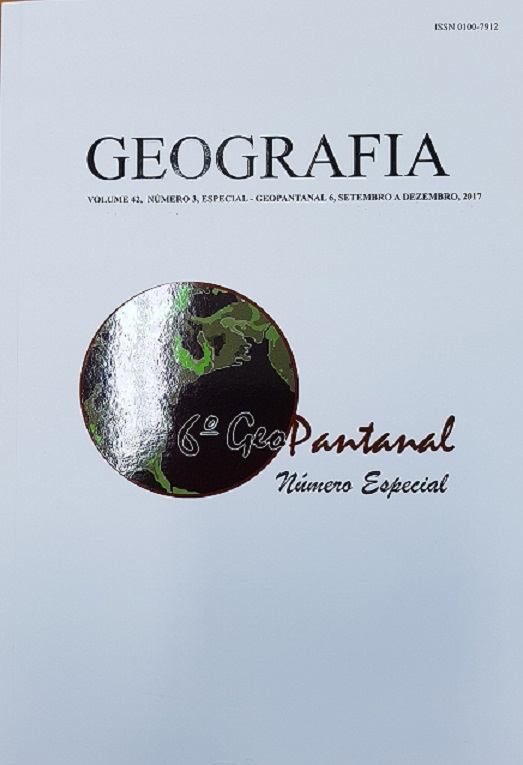DIAGNOSES OF POTENTIAL EROSION AREAS AND LAND USE CONFLICTS IN THE ARAPUTANGA MUNICIPALITY, MATO GROSSO STATE (MT), BRAZIL
DOI:
https://doi.org/10.5016/geografia.v42i3.13090Abstract
The objective of this study was to diagnose the potential degradation areas due to water erosion and the conflicts derived from land use in the Araputanga unicipality / Mato Grosso State. A geomorphologic and pedologic compartmentalization was generated from the superposition of soil and geomorphology maps; the erodibility by the association of the soils map of the erodibility information; the susceptibility to water erosion from the combination of the erodibility maps and the topographic factor. The vegetation cover and land use map were drawn from the Landsat 8 images of 2016. The current potential for water erosion was generated from the combination of maps on susceptibility to erosion with land cover/land use. For the assessment of conflicts, maps of current potential for water erosion and land use capacity were used. In Araputanga municipality, the Luvisols cover 62.93%. A high erodibility predominates in 73.09%; human activities occupy 64.98%. There is an average potential to water erosion in 86.31% and an average for land use conflict in 40.40%. The high erodibilitydue to the physical and chemical characteristics of the soil appears in gullies. It is necessary to readjust the land use in order to reduce the environmental problems and to maintain the landscape functionsDownloads
Published
Issue
Section
License
The authors maintain the copyright and grant GEOGRAFIA the right of first publication, with the articles simultaneously licensed under the Creative Commons BY 4.0 License, which allows sharing and adapting the articles for any purpose, as long as appropriate credits and provisions of image rights, privacy or moral rights. Other legal attributions can be accessed at: https://creativecommons.org/licenses/by/4.0/legalcode.en.
Geography, Rio Claro, SP, Brazil - eISSN 1983-8700 is licensed under the Creative Commons BY 4.0 License.





